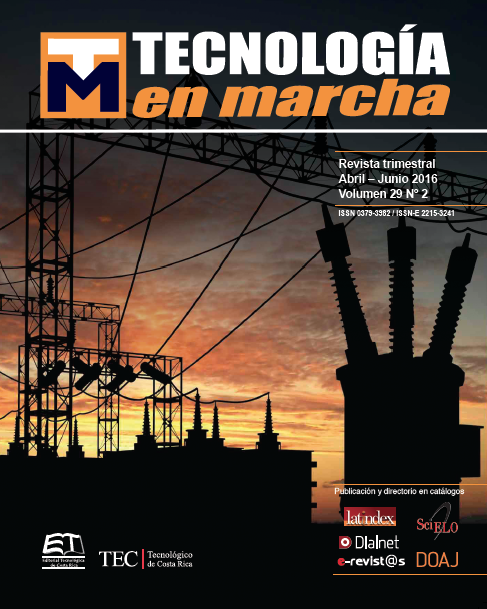Community perception of odors generated by the Wastewater Treatment Plant El Roble-Puntarenas, Costa Rica
Main Article Content
Abstract
In Costa Rica, many Wastewater Pumping Stations (WPS) and Wastewater Treatment Plants (WTP) have being implemented. The wastewater, due to its dissolved compounds together with the decomposition process in which it is involved, produces strong odors (or bad odor) affecting the comfort and life quality of the citizens closer to plant sites. Despite this, during the design and construction process, appropriate mitigation actions have not been included. In order to evaluate the properties of these gases in the environments, there is olfactometry equipment available, however, it is an expensive technique. Considering the sensory capacity, a method was developed by the application of surveys in order to identify the influence radius and other characteristics of the odors generated in El Roble-Puntarenas WTP. This WTP is considered a critical point owing to its influences in tourism services. In total, 256 surveys were made within a radius of 800 m. 76% of the surveys indicated that the odors emitted by the WTP were perceived within a radius of 600m, where 57% of the surveyees indicated that they perceived strong odors and 83% perceived fecal like odors. The time-slots in which the odors were perceived more intensely were from 6:00 to 9:00, 15:00 to 21:00. Likewise, more odors were perceived during the rainy season.
Article Details
Los autores conservan los derechos de autor y ceden a la revista el derecho de la primera publicación y pueda editarlo, reproducirlo, distribuirlo, exhibirlo y comunicarlo en el país y en el extranjero mediante medios impresos y electrónicos. Asimismo, asumen el compromiso sobre cualquier litigio o reclamación relacionada con derechos de propiedad intelectual, exonerando de responsabilidad a la Editorial Tecnológica de Costa Rica. Además, se establece que los autores pueden realizar otros acuerdos contractuales independientes y adicionales para la distribución no exclusiva de la versión del artículo publicado en esta revista (p. ej., incluirlo en un repositorio institucional o publicarlo en un libro) siempre que indiquen claramente que el trabajo se publicó por primera vez en esta revista.

